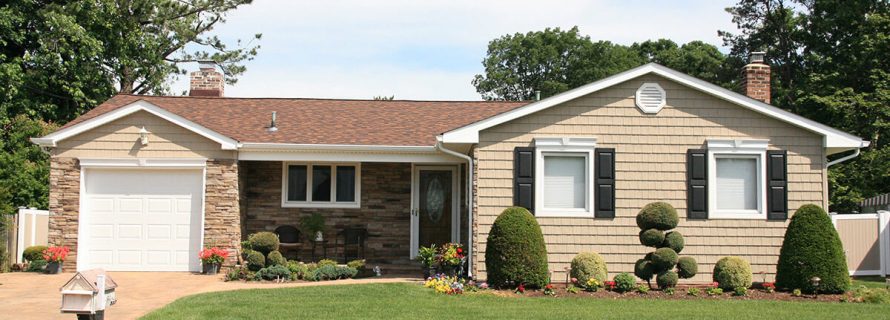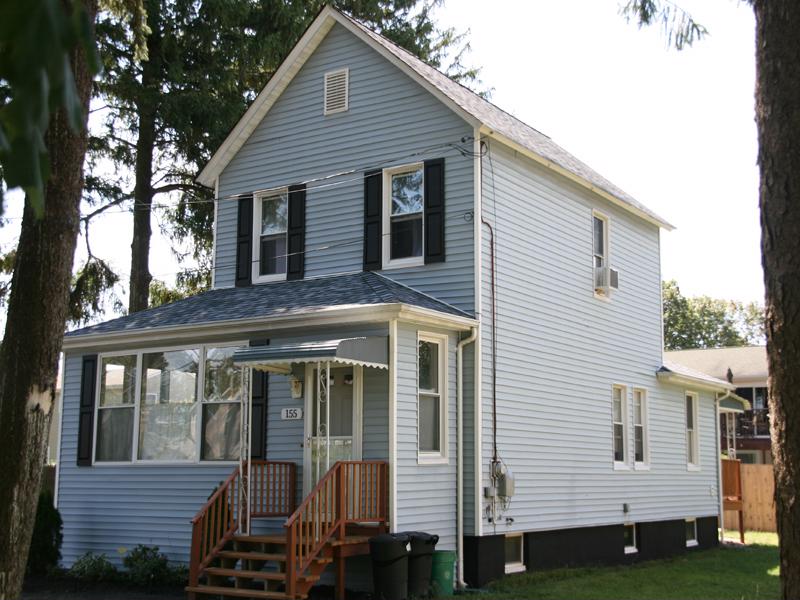6 signs it’s time to replace your siding

Siding is the lifeblood of your home’s exterior beauty and functionality. Poorly maintained or timeworn siding can not only detract from the curb appeal of your home, but it can also expose your home to the elements. Below are six telltale signs that it’s time to replace your siding.
“High energy bills can be a sign that your home’s siding is not functioning properly.”
1. Higher heating and cooling bills
Siding with quality insulation board can play a significant role in the comfort of your home. If you’ve noticed your heating and cooling bills have been steadily increasing, it’s a sign that your home’s siding and insulation are not functioning as they should. Perform an inspection before you make any decisions, but if it’s clear that there is no other reason for the higher energy costs, you may need to consider new siding.
2. Warping or visible rotting
You should inspect your home’s exterior regularly, and if you notice areas where the siding has warped or begun to disintegrate, it’s definitely time for new siding. Warped and rotting siding may allow damaging water in between your siding and your insulation material. Not only can it lead to expensive interior repairs, but siding that has warped or rotted is very unsightly.
3. Damage to interior walls
Siding acts as a preventative to keep water from getting inside and ruining your home’s interior. If your wallpaper has begun to peel or if the walls begin to bubble or take on a soft, spongy feeling, it may be a sign that your siding is not fulfilling its duty of keeping moisture out.
4. Frequent painting required
SidingMagazine.com wrote that good siding should maintain its original shape and coloring for eight to 10 years. If you’ve had to paint your siding more frequently than this, it could be a sign of poor siding. Quality siding should stay beautiful for years without much maintenance.

5. Loose or cracked panels
Sometimes you experience bad weather that can put your siding to the test. It may even leave you with some damaged section. One or two cracked boards isn’t cause for alarm, but when large sections of panel show signs of damage it’s a good idea to install new siding. This can help reduce the risk of further damage to your house. Additionally, loose and cracked siding is an eyesore that will reduce your home’s curb appeal.
6. Fungi are present
Carefully inspect the seams of your home’s siding. If there is visible mold, mildew or other fungi, it’s time to replace your siding. It’s a sign that moisture has penetrated your exterior and could be causing damage. New siding will help seal the water out and prevent you from breathing in the unhealthy spores.
Many people underestimate the importance of siding, but it’s a crucial part of keeping your home properly insulated, protecting the interior from moisture damage and adding curb appeal. If you’ve noticed any of the signs above with your home’s exterior, it’s probably time to consider installing new siding.
- Additions and New Construction
- All Exteriors
- Alterations
- Basements
- Bathrooms
- Customer Service
- Customer Stories
- Decks
- Design & Planning Show
- DIY
- Doors
- Educational Resources
- Extreme Makeover Home Edition
- Fashion Show
- General Remodeling
- Green Living
- Handyman Home Services
- Home Decor
- Home Entertainment
- Home Improvement
- Home Improvements
- How to Tips
- In The Community
- Kitchens
- Off-the-Wall Remodeling Stories
- Remodeling
- Resources
- Roofing
- Siding
- Social Media
- Sunrooms
- Tips & Tricks
- Trends
- Windows

